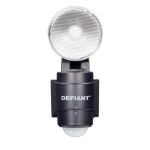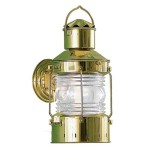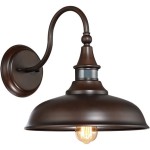Outdoor Plants Requiring No Sunlight: A Guide to Thriving in Shade
While sun-loving plants may bask in the glory of direct sunlight, there exists a fascinating world of outdoor plants that thrive in the absence of direct solar rays. These shade-tolerant species, often overlooked in a world obsessed with sunlit gardens, possess unique adaptations that allow them to flourish even in the depths of a forested canopy or the shadowed corners of a building. This guide delves into the captivating realm of outdoor plants that require minimal sunlight, providing insights into their characteristics, care requirements, and the beauty they bring to shaded landscapes.
Understanding Shade Tolerance
Shade tolerance is not an absolute condition, but rather a spectrum. While some plants can only tolerate brief periods of dappled shade, others thrive in the near absence of direct sunlight. The term "shade-tolerant" encompasses a wide range of light conditions, from partial shade (receiving 2-4 hours of direct sunlight daily) to deep shade (receiving less than 2 hours of direct sunlight daily). Understanding the specific light requirements of each plant is crucial to selecting the right species for your shaded outdoor space.
Plants adapted to shade often exhibit distinct characteristics. Their leaves are typically larger and wider, maximizing the capture of limited sunlight. The leaf surface may also have a glossy sheen, reflecting sunlight to enhance photosynthesis. Some species even have leaves that turn towards light sources, a phenomenon known as phototropism. These adaptations allow them to survive and flourish in the challenging conditions of low light.
Popular Shade-Loving Outdoor Plants
The world of shade-tolerant plants is diverse, offering a captivating array of colors, textures, and forms. From the vibrant blooms of rhododendrons to the delicate foliage of ferns, there is a shade-loving plant to complement every garden style. Here are some popular choices:
1. Hostas
Known for their striking foliage, hostas are a staple of shade gardens. They come in a wide range of sizes, shapes, and colors, from deep green to variegated yellow and white. Hostas are relatively low-maintenance, requiring well-drained soil and regular watering. Their attractive foliage remains vibrant throughout the growing season, adding texture and elegance to shady areas.
2. Ferns
With their delicate fronds and ethereal beauty, ferns are an ideal choice for creating a tranquil, woodland ambiance. They thrive in moist, shady conditions, and are available in a wide variety of sizes and forms. Many fern species, such as the Lady Fern and the Boston Fern, adapt well to container gardening, allowing them to grace balconies and patios even in the absence of direct sunlight.
3. Astilbe
These captivating perennials boast feathery plumes of flowers in shades of pink, red, white, and lavender. Astilbes prefer moist, well-drained soil and thrive in dappled shade. Their delicate blooms add a touch of romanticism and elegance to shaded areas.
4. Japanese Painted Fern
This unique fern is renowned for its striking foliage, featuring silvery-white veins against a backdrop of deep green. Japanese Painted Ferns are particularly well-suited for shady gardens, where their vibrant foliage can stand out against the darker background.
5. Lungwort (Pulmonaria)
This low-growing perennial features attractive, speckled leaves and delicate bell-shaped flowers in shades of blue, pink, and white. Lungwort prefers partial to deep shade and thrives in moist, well-drained soil. It adds a touch of color and texture to shady areas.
Caring for Shade-Loving Plants
While shade-tolerant plants are less demanding than their sun-loving counterparts, they still require attentive care to thrive.
1. Watering
As shade-tolerant plants often grow in moist environments, regular watering is essential. Aim for deep watering, ensuring that the soil is thoroughly soaked, but avoid overwatering, which can lead to root rot. During periods of drought, increase watering frequency.
2. Fertilizing
Shade-tolerant plants often benefit from occasional fertilization, particularly when growing in poor soil. Use a balanced fertilizer designed for flowering plants or a slow-release formula, applying it once a month during the growing season. Avoid over-fertilizing, which can damage plants.
3. Pruning
Most shade-tolerant plants benefit from annual pruning in early spring. This helps to remove dead or damaged foliage, promoting healthy growth and encouraging new blooms. Pruning can also help maintain the desired shape and size of the plant.
4. Disease and Pest Control
Shade-tolerant plants can still fall prey to diseases and pests, although they are generally less susceptible than their sun-loving counterparts. Regularly inspect plants for signs of infestation or disease, and take action promptly if necessary. Use organic pest control methods whenever possible to avoid harming beneficial insects.

20 Plants That Don T Need Sun Hard To Kill Flowers Vegetables Indoor

20 Plants That Don T Need Sun Hard To Kill Flowers Vegetables Indoor

25 Shade Loving Plants To Brighten The Dark Side Of Your Yard Bob Vila

The Best 10 Plants That Don T Need Sun A Z Animals

20 Plants That Don T Need Sun Hard To Kill Flowers Vegetables Indoor

25 Shade Loving Plants To Brighten The Dark Side Of Your Yard Bob Vila

These Gorgeous Garden Plants Require Literally No Sunlight At All Shade Loving Perennials

24 Best Indoor Plants Find Your Perfect Houseplant Garden Design

Heat Tolerant Plants That Resist The Sun And

10 Shade Tolerant Plants For Shady Yards Gardener S Supply
Related Posts







